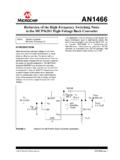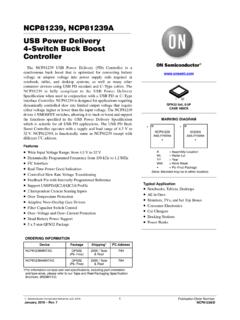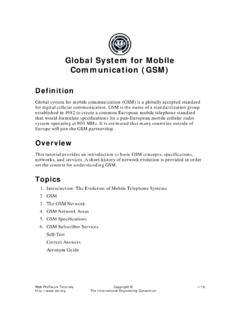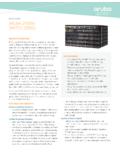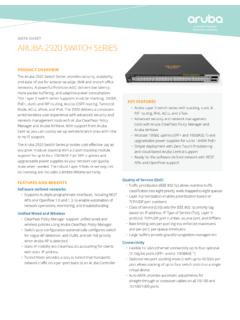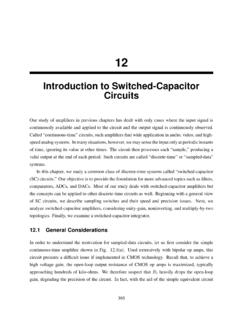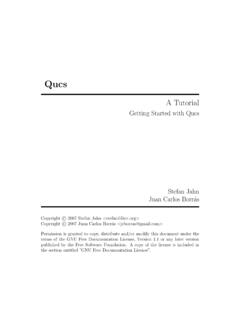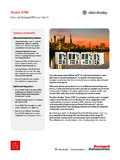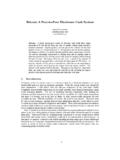Transcription of ArubaOS-Switch and Cisco IOS CLI Reference Guide
1 ArubaOS-Switch and Cisco IOS CLI Reference Guide Table of Contents Introduction .. 5 Using This Guide .. 6 Navigation Differences Among CLIs .. 6 Configuration Differences Among CLIs .. 6 Terminology Differences .. 7 Disclaimer .. 7 Comparing View and Configuration Prompts .. 8 Comparing Frequently Used Commands .. 8 Chapter 1 Basic switch Management .. 9 a) Management Access .. 9 b) Configuration Access .. 10 c) Console Access Baud Rate .. 11 d) Console and Virtual Terminal Access Timeout .. 11 e) Reload & Timed Reload .. 12 f) USB .. 14 g) System and Environment .. 15 h) Remote Management Sessions Viewing .. 19 i) Remote Management Sessions Terminating.
2 20 j) Tech Support Information Output 21 k) Filtering Output show running-config and display 22 l) Motd .. 23 m) Source Interface for Management Communications .. 23 Chapter 2 switch User ID and Password, and Console Access .. 26 a) Local User ID and Password, and console access .. 26 b) Recover Lost Password .. 30 c) Protect Local Password .. 31 d) Role based management .. 33 e) Password complexity .. 40 Chapter 3 Image or Operating System File Management .. 46 Chapter 4 Configuration File Management .. 55 1 Chapter 5 Syslog Services .. 64 Chapter 6 Time Service .. 69 a) NTP .. 69 b) SNTP .. 73 Chapter 7 SNMP .. 77 a) SNMP Version 1 and Version 2c.
3 78 b) SNMP Version 3 .. 85 Chapter 8 CLI Management Access Telnet and SSH .. 92 a) Telnet .. 92 b) SSH .. 94 Chapter 9 GUI Management Access HTTP and HTTPS .. 99 a) HTTP .. 99 b) HTTPS - SSL (Self-Signed Certificates) .. 100 Chapter 10 RADIUS Authentication for switch Management .. 106 a) Basic Configuration .. 107 b) Privilege Mode .. 116 c) Commands 119 d) RADIUS Accounting .. 120 Chapter 11 TACACS+/HWTACACS Authentication for switch Management .. 123 a) Basic Configuration .. 123 b) Privilege Mode .. 129 c) TACACS Accounting .. 131 Chapter 12 Discovery Protocols LLDP and CDP .. 135 a) LLDP .. 135 b) CDP .. 139 Chapter 13 Out-of-Band Management.
4 143 Chapter 14 Job Schedule .. 154 Chapter 15 Interface or Port Information and Nomenclature .. 158 Chapter 16 VLAN Management .. 167 a) Creating and Naming VLANs .. 167 b) Assigning Ports or Interfaces to VLANs .. 170 2 c) Assigning an IP Address to a VLAN .. 177 d) IP Helper to Relay / Forward DHCP Requests .. 179 Chapter 17 Advanced VLAN Features .. 182 a) Private 182 b) MVRP .. 183 c) VxLAN .. 184 d) MDNS, IPv6 ND snooping, BFD .. 185 e) RIPNG .. 187 f) IP-SLA, Portscan detection .. 188 g) Federal Govt Certification, Netdestination .. 193 Chapter 18 PoE (Power over Ethernet) .. 196 Chapter 19 VoIP Support .. 201 Chapter 20 Link Aggregation LACP and Trunk.
5 203 a) Link Aggregation Control Protocol (LACP) .. 203 b) Trunk .. 208 Chapter 21 RSTP .. 212 Chapter 22 MSTP .. 217 Chapter 23 PVST/PVST+/RPVST/RPVST+.. 228 Chapter 24 RIP v1 and 233 Chapter 25 OSPFv2 .. 236 a) Single Area .. 236 b) Multiple Areas .. 238 c) Stub .. 240 d) Totally Stubby .. 240 e) Show or Display OSPF Commands .. 241 Chapter 26 BGP version 4 .. 246 a) eBGP .. 247 b) iBGP .. 253 Chapter 27 VRRP .. 256 Chapter 28 ACLs .. 260 a) Definitions of Standard or Basic ACLs and Extended or Advanced ACLs .. 260 3 b) ACL Fundamental Configuration Options .. 260 Standard/Basic .. 260 261 c) Routed/Layer 3 ACL (RACL) .. 261 Standard or Basic ACL.
6 262 Extended or Advanced ACL .. 262 d) VLAN/Layer 2 Based ACL (VACL) .. 265 Standard or Basic ACL .. 265 Extended or Advanced ACL .. 265 e) Port ACL (PACL) .. 269 Standard or Basic ACL .. 269 Extended or Advanced ACL .. 269 Chapter 29 QoS .. 272 QoS Operational Characteristics .. 272 a) QoS .. 273 b) Rate Limiting .. 277 Chapter 30 IP Multicast .. 281 a) PIM Dense .. 282 b) PIM Sparse .. 284 c) IGMP .. 289 Chapter 31 Spanning Tree Hardening .. 290 a) UDLD and DLDP .. 292 b) BPDU Protection and BPDU Guard .. 294 c) Loop Protection .. 295 d) Root Guard .. 295 Chapter 32 DHCP Snooping .. 296 Chapter 33 ARP Protection, ARP Detection, and Dynamic ARP Inspection.
7 301 Chapter 34 Connection Rate Filtering .. 306 Chapter 35 Authentication .. 309 a) Authentication .. 309 4 b) MAC 311 c) Web or Portal Authentication .. 316 Chapter 36 Port Mirroring or Port Span .. 325 a) Local Mirror or SPAN .. 325 b) Remote Mirror or RSPAN .. 329 Chapter 37 Tunneled Node, Trust QoS, Clear Pass Intergration .. 334 Chapter 38 HP 3800 Stacking / HP IRF / Cisco switch Stacks .. 338 Appendix A CLI Commands in ArubaOS-Switch Software .. 342 a) Fundamental Commands .. 342 b) Display Commands .. 343 Index .. 348 5 Introduction Aruba designed this CLI Reference Guide to help Hewlett Packard Enterprise partners and customers who: Manage multi-vendor networks that include HPE and Cisco switches Have experience deploying Cisco switches and are now deploying HPE switches This CLI Reference Guide compares many of the common commands in two switch operating systems: HPE ArubaOS-Switch (now the Aruba OS), and Cisco IOS operating systems.
8 In this Guide , we refer to HPE ProVision as ArubaOS-Switch and Cisco IOS is referenced as Cisco . The HPE ArubaOS-Switch operating system runs on 2530, 2920, 2930F, 3810M, 5400R, HPE 2620, HPE 3500, HPE 5400 and HPE 3800 switch platforms, where the image file starts with the letter W . In addition, the HPE 3800 uses the same foundation ArubaOS-Switch operating system, but the image file starts with the letters KA . The HPE 5400R zl2 also uses the same foundation ArubaOS-Switch operating system, but the image file starts with the letters KB . The commands included in this Guide were tested on the following: HPE 3800-24G-PoE+-2 SFP+ switch running ArubaOS-Switch Cisco WS-C3750E-24TD switch running Cisco IOS Software C3750E Software (C3750E-UNIVERSALK9-M), (1)SE Additional HPE and Cisco switches and/or routers were used to provide systems connectivity and operational support as necessary.
9 Likewise, various computers and Voice over IP (VoIP) phones were used to help test functionality and provide output for commands such as show or display. 6 Using This Guide This CLI Reference Guide provides CLI command comparisons in two different formats: Side-by-side comparison It provides a table of the basic commands required to execute a given function in each of the operating systems. In this side-by-side comparison, each platform s commands do not always start at the top of the column. Instead, commands that have similar functions are aligned side by side so that you can easily translate the commands on one platform with similar commands on another platform.
10 Detailed comparison Beneath the side-by-side comparison, this Guide provides a more in-depth comparison, displaying the output of the command and options. Occasionally, there are few, if any, similarities among the commands required to execute a function or feature in each operating system. In these instances, each column has the commands necessary to implement the specific function or feature, and the side-by-side comparison does not apply. Navigation Differences Among CLIs Basic CLI navigation on all three platforms is very similar, with one notable difference: With ArubaOS-Switch , you can use the Tab key for command completion; you can also use the Tab key or the ?

